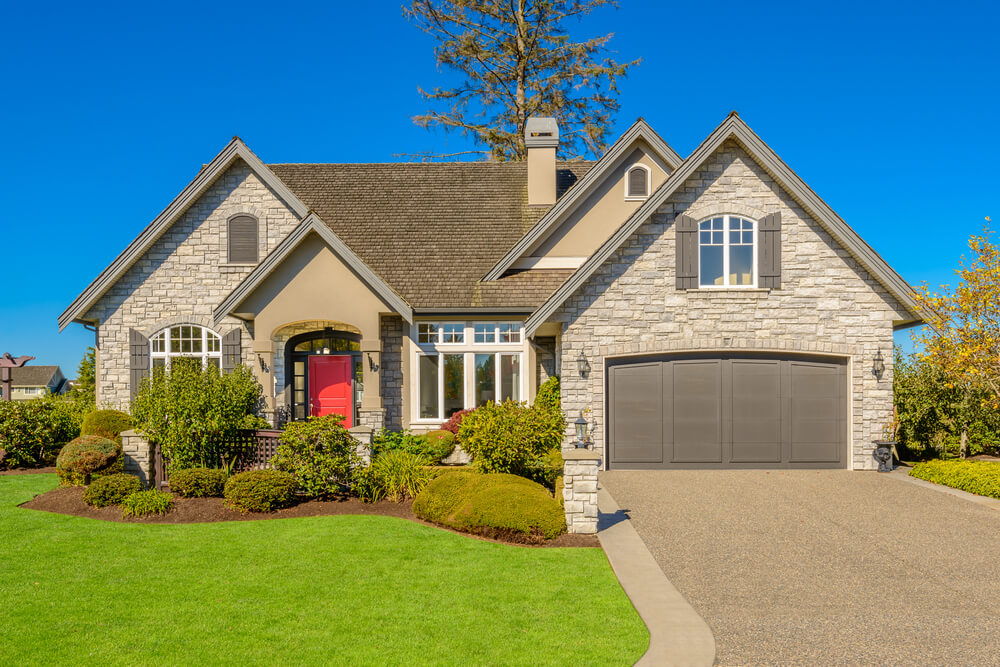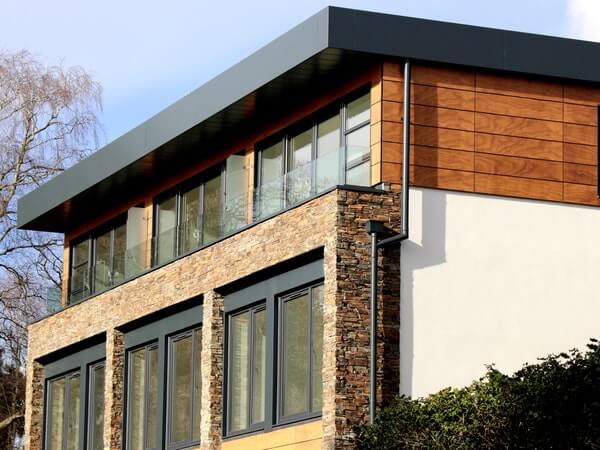
Exposed aggregate concrete is concrete that is used for decorative purposes and obtained by the removal of the surface mortar of the poured concrete to reveal the aggregate beneath the surface. The coarse aggregates can either be natural or artificial. The aggregates can either be mixed with the concrete or seeded on the surface. The practice of using exposed aggregate concrete has been in existence since the 20th century.
How Is It Obtained?
There are various methods to remove the surface layer in order to expose the aggregates. Some of them have been mentioned here.
- Surface retarder: Surface retarder is a chemical that when sprayed on the concrete surface after pouring and finishing, increases the setting time of the concrete. The increased setting time gives enough time to remove the cement layer thereby exposing the aggregates. Surface retarders are widely used by contractors all over the world to obtain exposed aggregate concrete.
- Washing and brushing: The surface layer of the concrete can be removed with a broom which is used to scrub the surface cement after spraying it with water. The washing and brushing method can be used to expose the aggregates up to the desired depth. However, make sure the aggregates should not damage or overexposed.
- Abrasive blasting: Shot blasting or sandblasting is the method that can be used to remove the surface mortar and expose the aggregates even though this is not a popular method because there is a significant risk of damaging the aggregates.
Uses of Exposed Aggregate Concrete
Decorative exposed aggregate concrete is widely used for making pool decks, patios, driveways, sidewalks, plazas, etc. There are a wide variety of materials for decorative aggregates available in the market. Have a look at some of them.
Different Types of Materials Used
Aggregates are available in different types of materials such as granite, limestone, basalt, gravel, bricks, and asphalt. Slag aggregates, made by crushing smelter slag or by special treatment of molten slag, are also available in the market. The aggregates come in various sizes, shapes, and colors. The main color of the paved area depends upon the color of the aggregates used in exposed aggregate concrete. The feel of the aggregate concrete on the feet depends upon the size and shape of the aggregates. The color choice of the aggregates can be made according to the type of color one wants to impart to the generally paved area.
The size and shape of the aggregates depend upon the type of area for which the exposed aggregate concrete is being used. For example, small rocks can be used for pool decks while smooth aggregates are not suitable for sloping sidewalks due to very little friction.
Advantages
- The surface of the exposed aggregate concrete is skid-resistant even during the rainy season which prevents tripping and falling. Exposed aggregate concrete also has high durability.
- There is no dearth of choices when it comes to the colors, sizes, and shapes of the aggregates. Thus, you can opt for any kind of decorative aggregates of your choice.
- Exposed aggregate concrete is an ideal choice for homes that receive heavy traffic. The stones and cement provide strong resistance against wear and tear.
- Not much maintenance is required for exposed aggregate concrete. It just requires cleaning with water on occasion and resealing after every five years.
- The cost of construction of exposed aggregate concrete is also not much. The process of construction is also not complex.
Disadvantages
- The decorative stones can get damaged or loosened due to water or the movement of heavy objects such as cars.
- Cleaning exposed aggregate concrete requires wire brushing or a strong jet of water to remove the dirt particles lodged between the aggregates. This is a far cry from simple concrete which simply requires a water hose for cleaning.
- Repairing cracks that may appear in exposed aggregate concrete is more complicated than simple concrete.
So, those were some of the vital tips you can keep in your mind when opting for exposed aggregate concrete for your home.
Also, read: http://www.newspeakblog.com/various-tips-using-concrete-floor-finishes/

